Tanzanian safari: Elephants, lions, and baobabs in Tarangire National Park
On our second full day in Tanzania (June 2007), we drove to Tarangire National Park, a 1,000-square-mile preserve located 75 miles away from Arusha. On the drive there, my face was pressed to the window, and I grew increasingly excited to see zebras and gazelles grazing in dusty savannas before we even arrived at the park. (“They do move in herds!” — geeky Jurassic Park reference.) Seeing animals in the wild that you’ve only known from zoos and books is thrilling. The best was yet to come, as we would have much-closer views from our safari vehicles once we entered Tarangire, known for its concentration of elephants, bird species, and baobab trees.
Baobabs punctuated the rolling, dry, Hill Country-esque landscape. These massive trees store water in their trunks, allowing them to survive during drought. They drop their leaves in the dry season, making it easy to admire their striking form.
This one had a hole in the trunk big enough for someone to walk through.
Trees are great. But we were all really here to see animals, and lots of them. Tarangire did not disappoint. We were instructed to call out animal sightings and their “o’clock” location — for example, “Ostrich! 9 o’clock!” — for the benefit of our fellow travelers, and soon we were all singing out names.
A pair of skittish warthogs with auburn manes
A cute dik-dik, an antelope that stands less than 2 feet tall
The dark patch below its eye is a scent gland used to mark territory.
Impala does, the first of many we’d see
Gentle-faced impala
We saw jackals, which look like small coyotes.
Lots of zebras
And my favorite: elephants. This elephant was giving itself a dust bath, snuffling up the dust in its trunk and blowing it over its flanks.
Poof!
Such a majestic creature — and rather intimidating as it walks toward you. In general the animals in all the parks were habituated to safari vehicles. They seemed not to see the people standing up with their heads poking out of the roof. But we were told how dangerous it would be to step out of the cars, and that the animals would certainly react to our presence if on foot.
Tanzania is a birder’s paradise. I saw this beautiful sunbird (“beautiful” is part of its name) resting on an aloe flower at a rest stop. It was just one of the many brilliantly colored or unusual birds that we’d see on this trip.
Hornbill is not one of the pretty ones. Sorry, hornbill.
We reached our hotel, Tarangire Sopa Lodge, in time for lunch. As at every hotel on our safari, we were greeted with damp towels to wipe the dust off our faces and hands and with champagne and fruit juice. What a treat!
Our room, with crossed spears over the beds and mosquito netting
Lunch and breakfast were served buffet-style in the dining room. At dinner we had sit-down service. I neglected to take photos of our meals and wish I had. Breakfasts were English style, with pastries, bread, bacon, eggs, and fruit offered. Lunches were usually stewed meat or vegetables spooned over rice. Dinners always started with soup and were generally Western-style dishes, ending with a bowl of ice cream for dessert. The deeper into the bush we drove, far from towns and supplies, the more amazed I became by what the chefs were able to serve us.
After lunch we set out on our second game drive in Tarangire. Our lead driver, Raymond, liked to joke, “Everybody loves Raymond!” The reach of U.S. sitcoms is scary.
He also showed us his sandals, with soles made of recycled tire treads.
We soon spotted a few vervet monkeys.
The distinguishing feature of the male vervet is a bright-blue scrotum. I’m sure you wanted to know that.
Curious giraffe
And lots more elephants
And more giraffes — such strange-looking creatures
But so cute!
The landscape in Tarangire reminded me of the Hill Country around Austin: rolling, arid hills covered with short, brushy trees, thorny acacias, and grasses.
This elephant calf did notice our car and got a bit alarmed. He spread his ears, raised his short trunk, and trumpeted in his baby voice at us.
Then he settled down and crossed the road with Mom.
We took a third game drive in Tarangire the next morning, spotting a herd of Cape buffalo. Where had they been all day yesterday? We didn’t know, but we saw a lot of them this day.
Unlike the elephants and giraffes, they were skittish of us and refused to relax, eventually trotting away. We learned that, along with the hippo, the buffalo is one of the most dangerous animals for humans in Tanzania. But not while we were in our cars, we trusted.
Elephants can eat just about any type of plant, including 3-inch-long, needle-sharp acacia thorns. The thorns, which are sharp enough to puncture a car tire, pass through the elephant’s digestive tract (not to mention mouth) intact, and drivers, bicyclists, and pedestrians do well to avoid riding or walking through elephant dung. One of our companions unfortunately did step on an acacia thorn while visiting a local school, and it went right through the sole of his shoe into his foot, pinning shoe to foot so that he couldn’t pull it off. One of the drivers used a knife to cut out part of the sole, exposing the thorn. Then, with a pair of pliers, he yanked the thorn out of his foot. Ouch!
Our touring group of 25, plus 5 drivers and our Tauck guide, occupied 5 vehicles like these. To see better, you just stood up in your seat and popped your upper body out the open roof.
I don’t think Dad and I ever sat down when we could stand up, jouncing over the bumpy, dirt roads and letting the dust blow through our hair. Whenever we returned to the hotel after a game drive, we were coated in dust that turned our damp washcloths orange.
Banded mongoose by the river
These juvenile male impalas were sparring, knocking their short horns against each other.
An adult male with elegant, twisting horns
Guinea fowl, just like my grandma used to keep
A warthog watching us from the grass, as skittish as the buffalo had been
Lovebirds in an acacia tree
A superb starling, one of the prettiest and tamest birds we encountered
I can’t remember the name of this one.
Male ostrich
An ostrich pair — the female’s plumage is brownish tan.
We saw a number of zebra foals, including this cinnamon-colored one. Newborn zebras are born with brown and white stripes, which turn to black around age one.
Adorable
Giraffe with elephants below, in the river
Waterbuck, the only one we saw on the safari
In the afternoon we made a final game drive, this time to a verdant, swampy area. It looked brilliantly green after the dusty hills we’d gotten used to.
I was having so much fun and enjoying being with my dad.
We spotted a lioness with a radio collar around her neck. She was making cough-like roars, calling to other lions, we were told.
We’d all been watching and listening to the collared lioness when I heard a soft sound on the gravel track behind us. I turned to look and saw this lioness padding down the track directly toward our car. She looked big. I was aware of how easily she could leap up onto our car if she wished. “Lion!” I tried to say, but my voice failed, and I grabbed at my seatmates’ arms to get their attention. Then, suddenly, she turned into the grass, walked toward the lioness who was calling for her, and playfully leaped.
After tackling her sister, she peered out of the grass.
Next up: A visit to a Tanzanian school and a game drive in Lake Manyara National Park. For a look back at a visit to a farmers market near Arusha, Tanzania, click here.
All material © 2006-2014 by Pam Penick for Digging. Unauthorized reproduction prohibited.


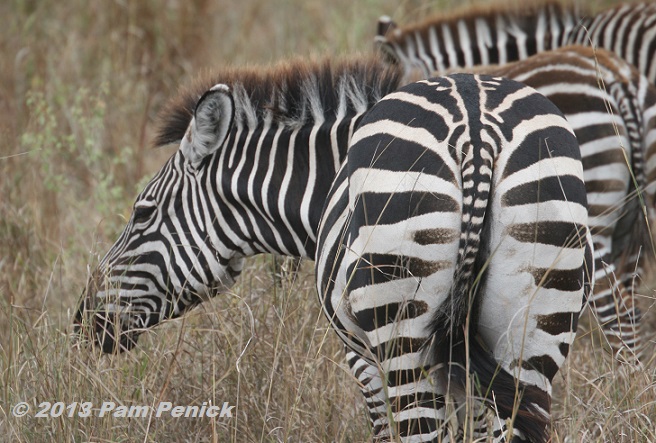
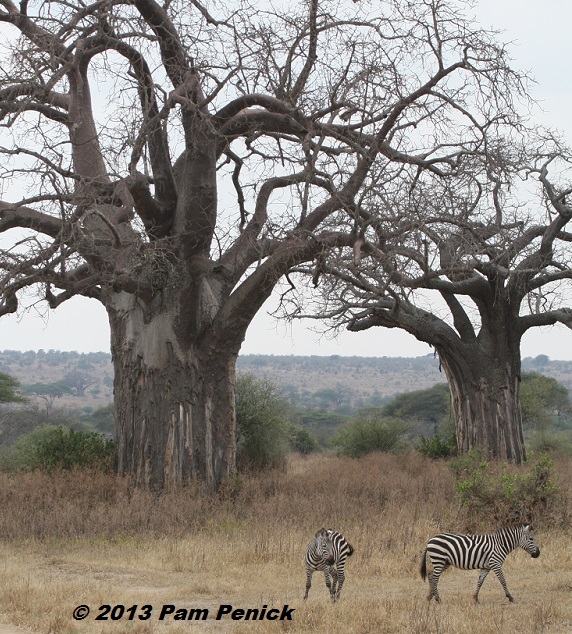
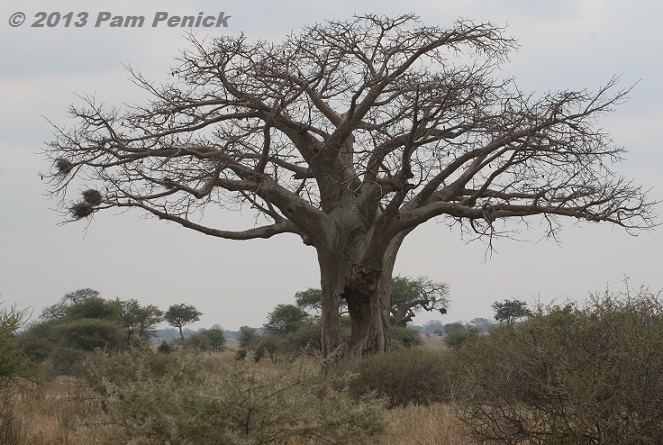
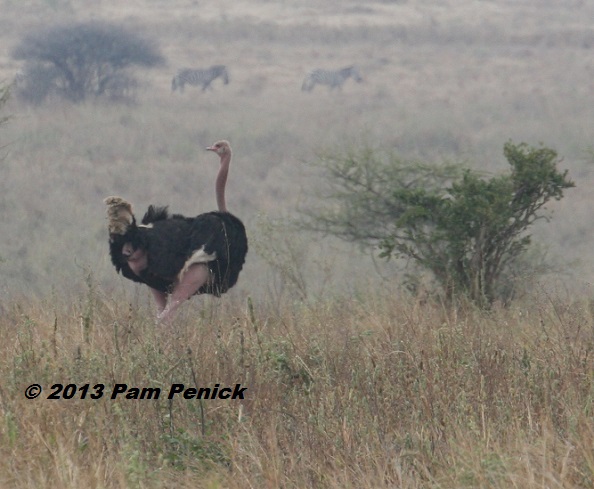
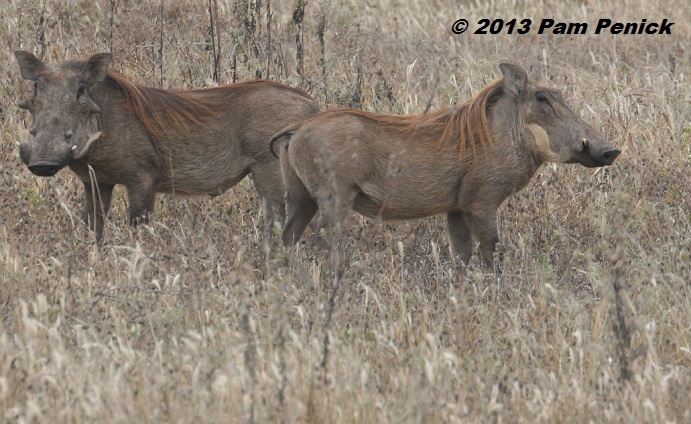
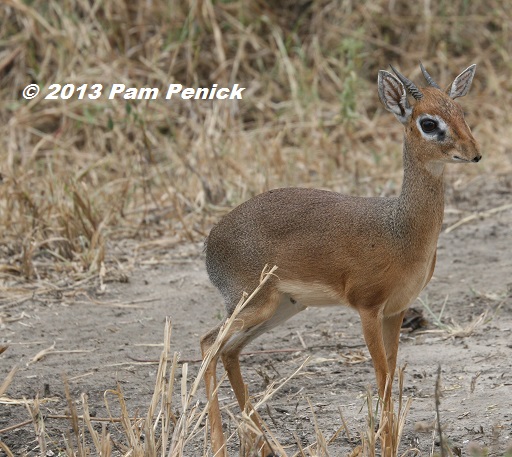
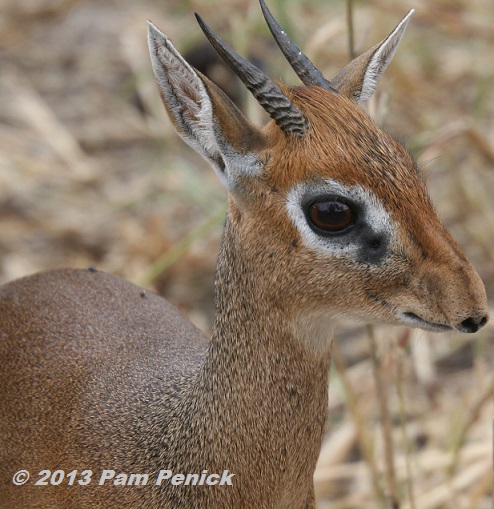
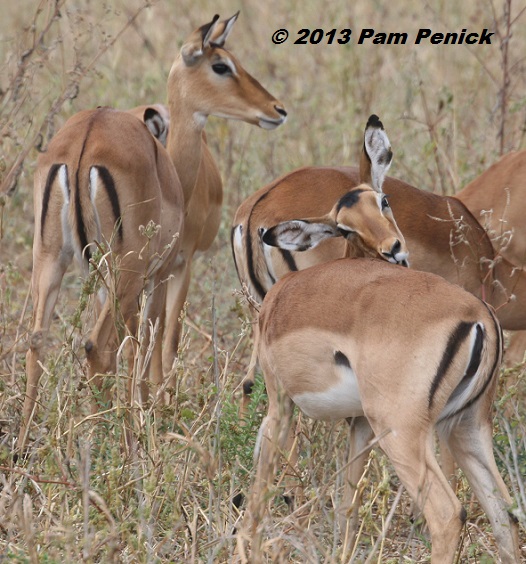
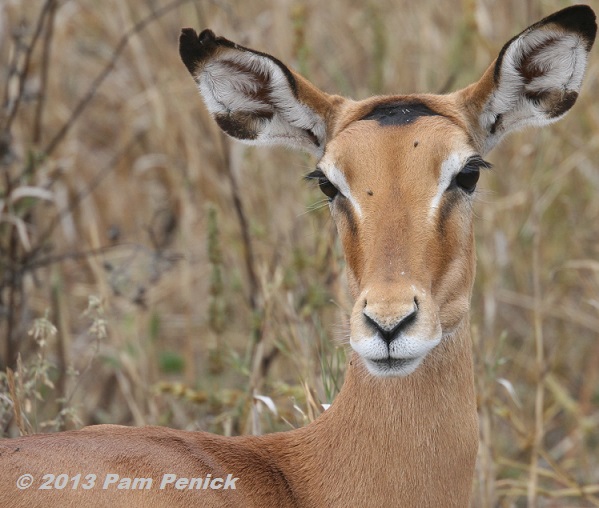
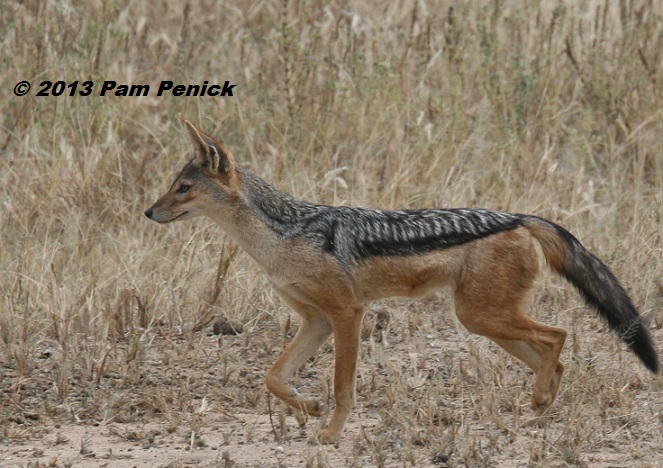
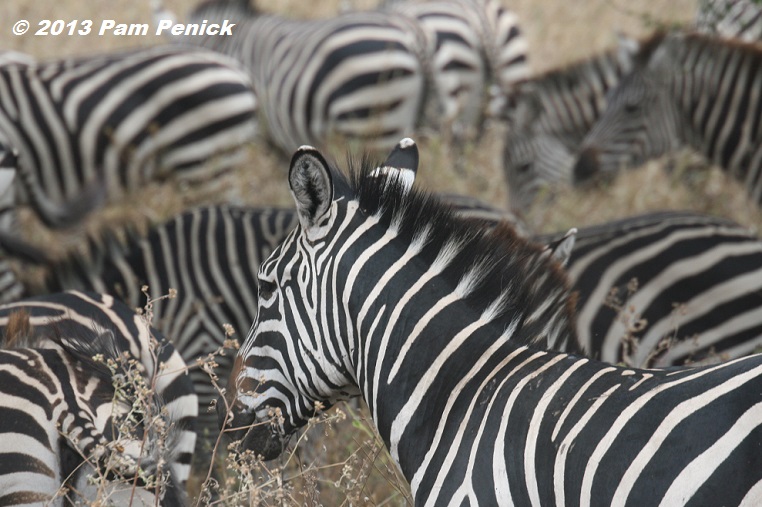
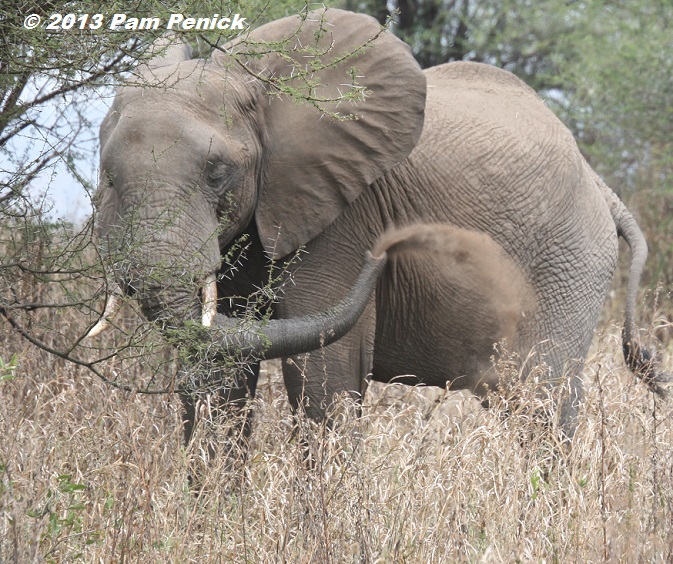
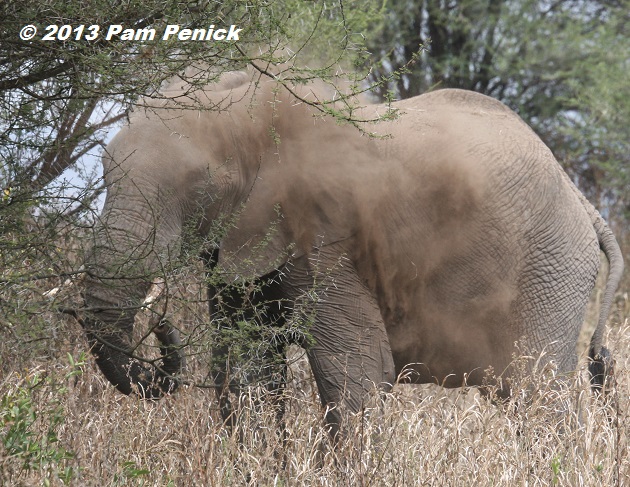
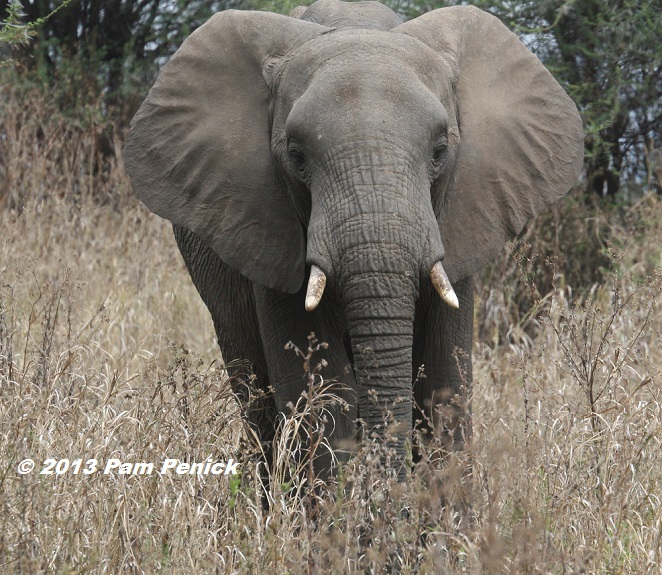
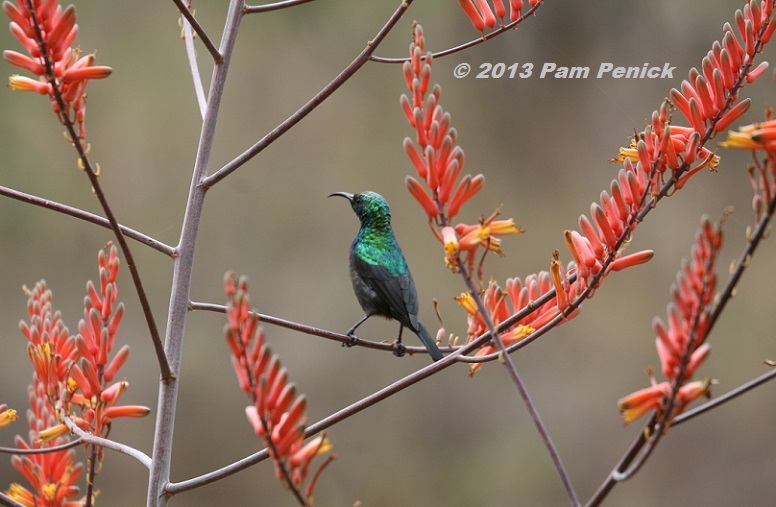
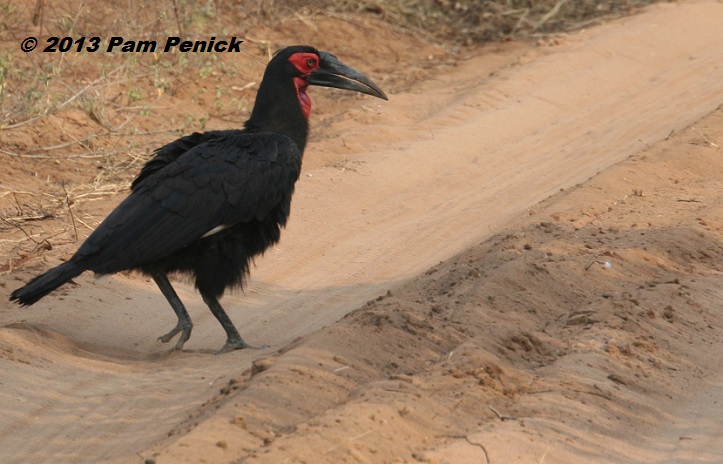
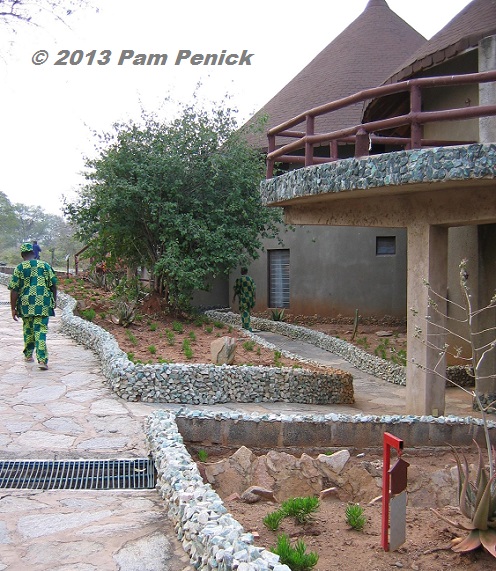

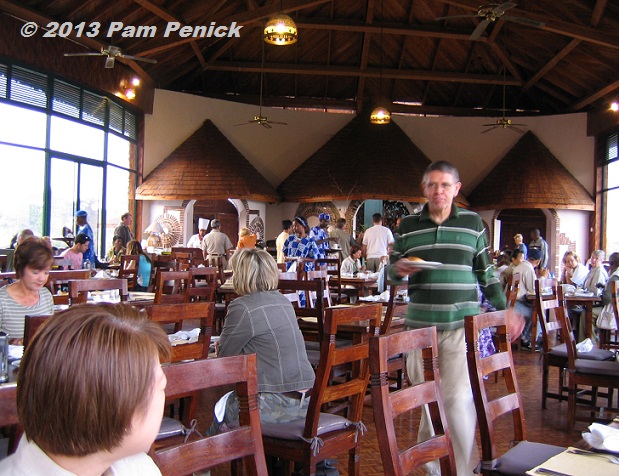
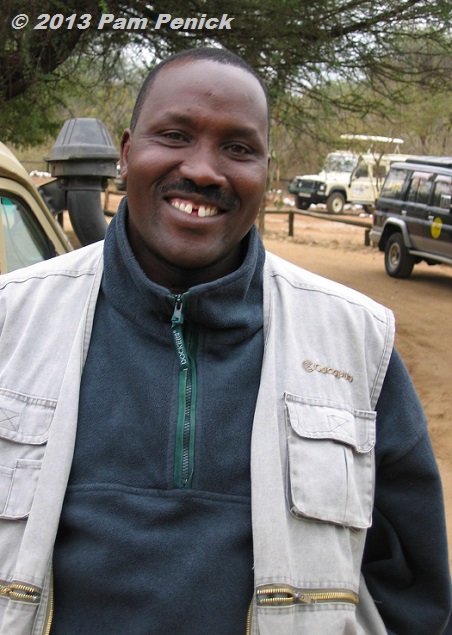
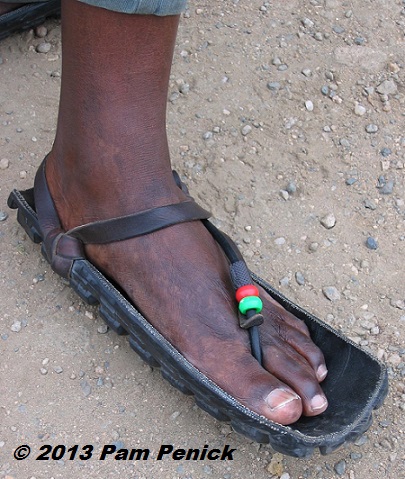
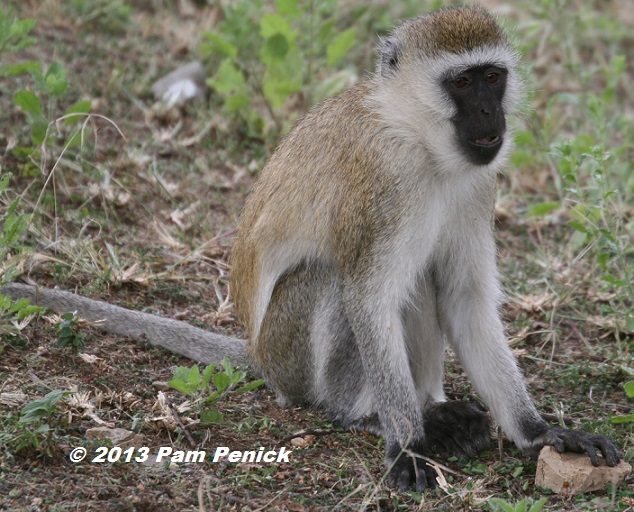
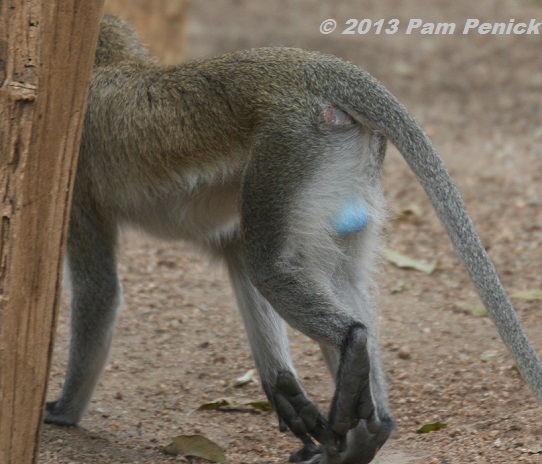
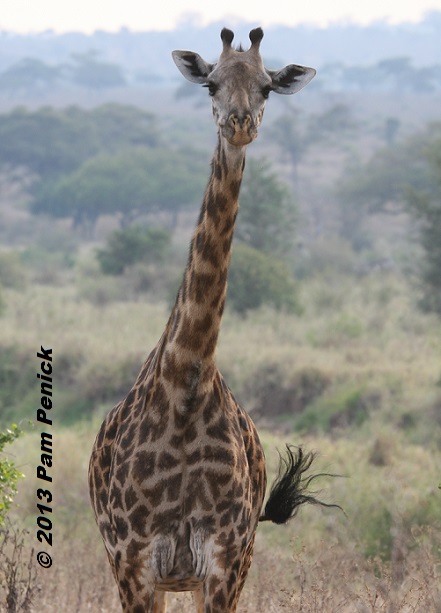
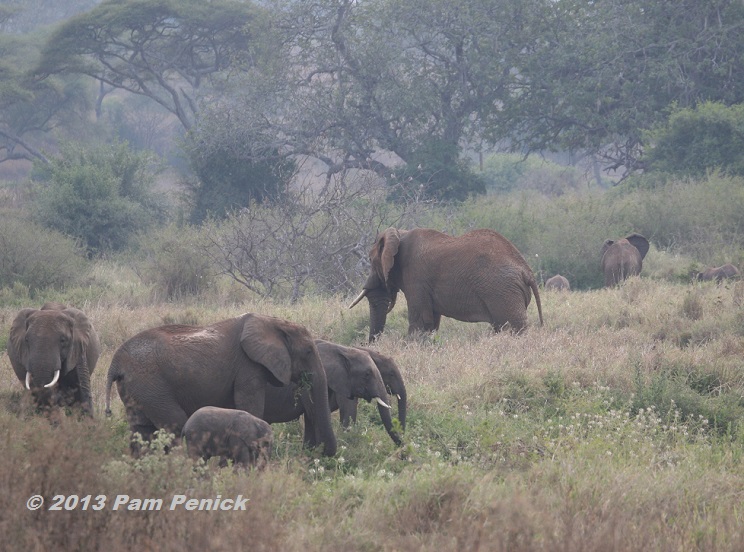
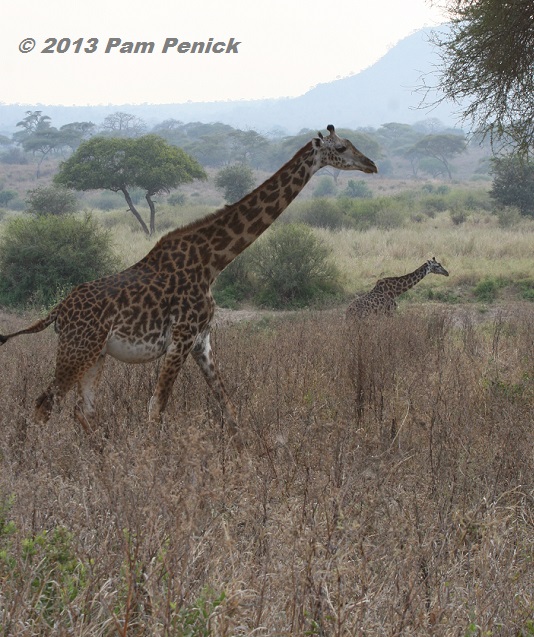
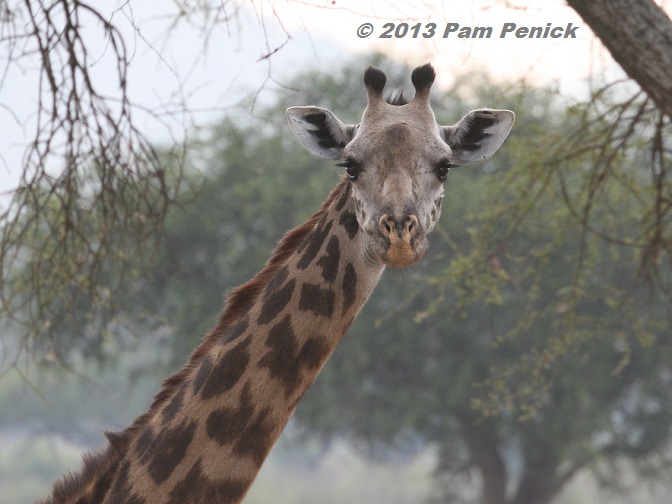
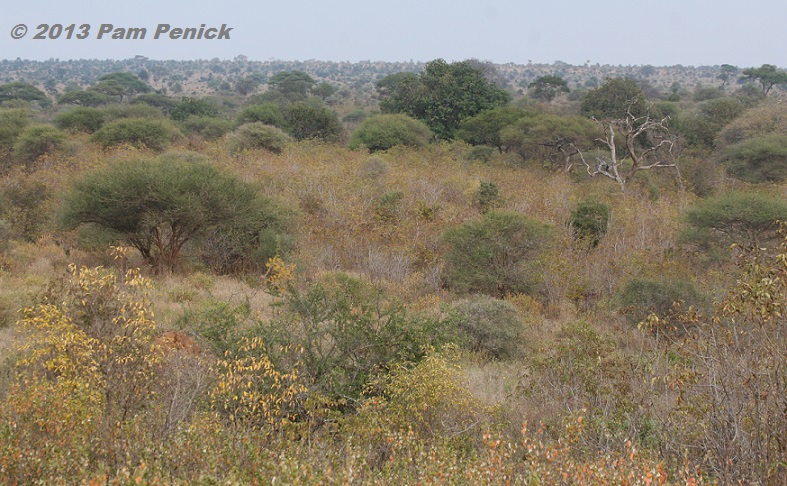
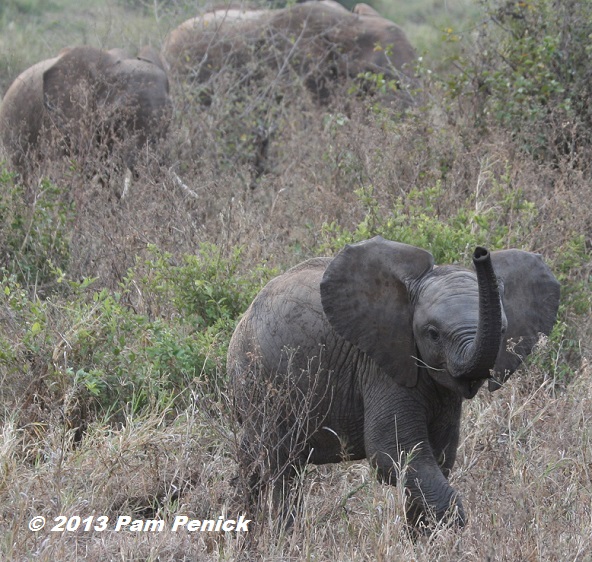
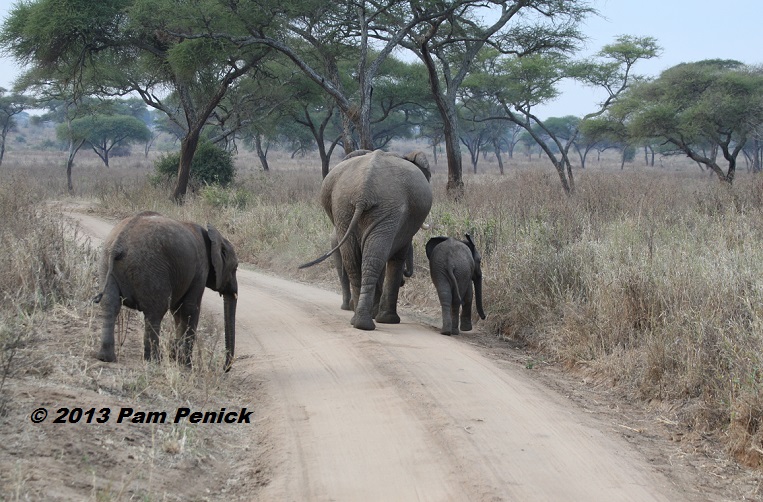
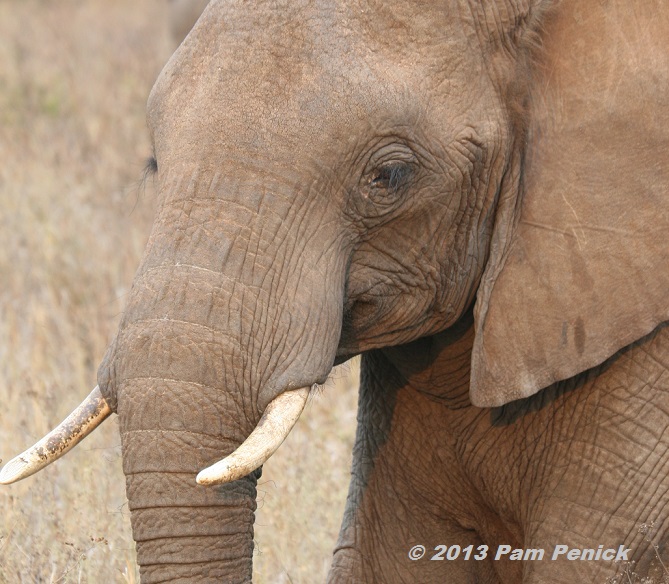
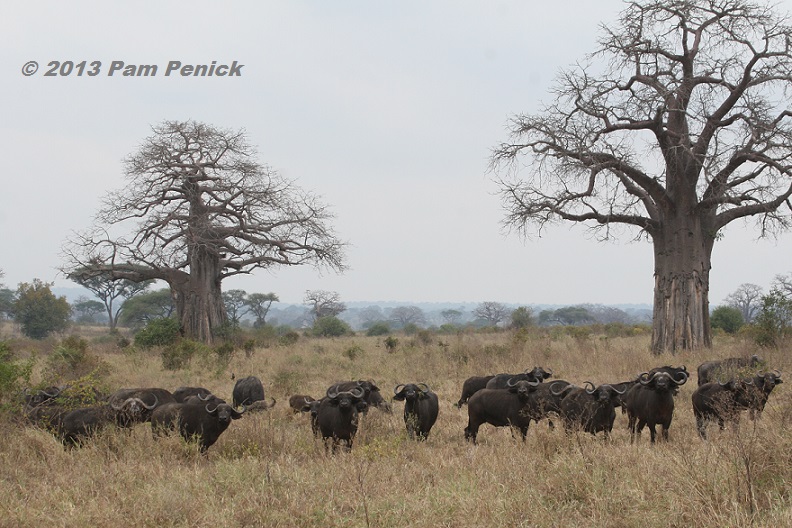
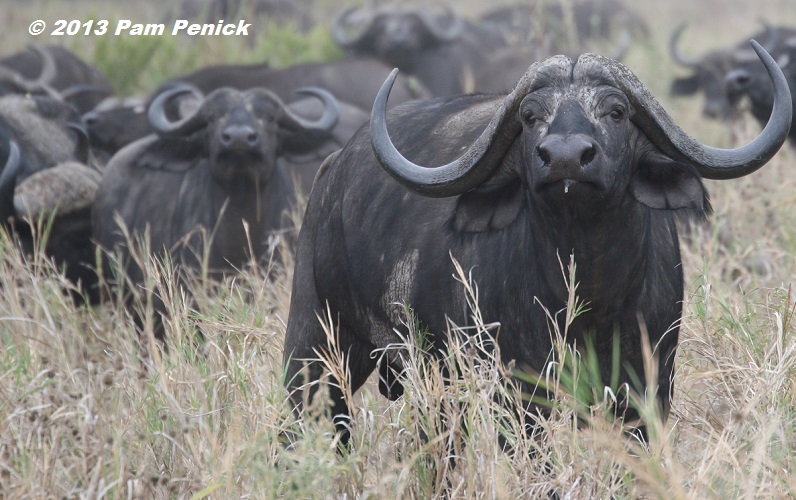
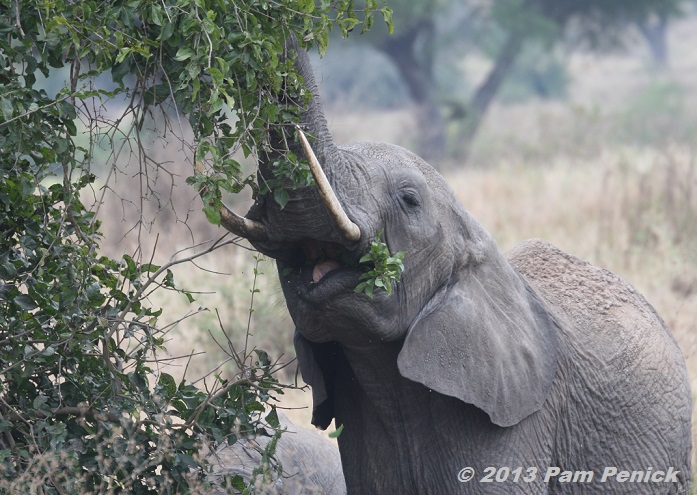
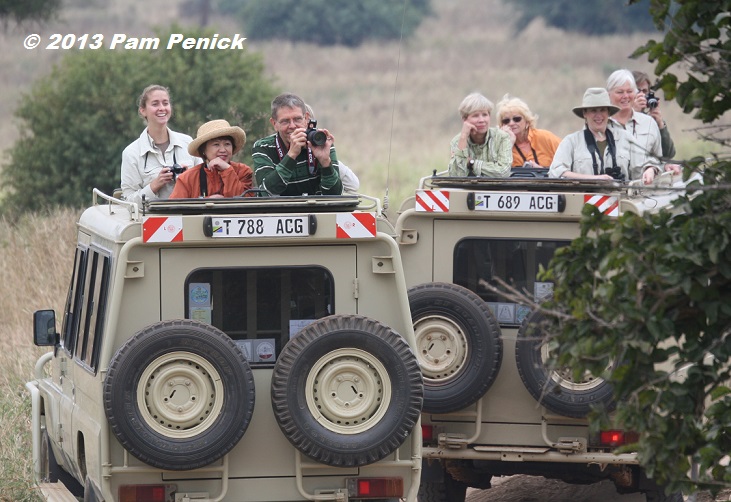
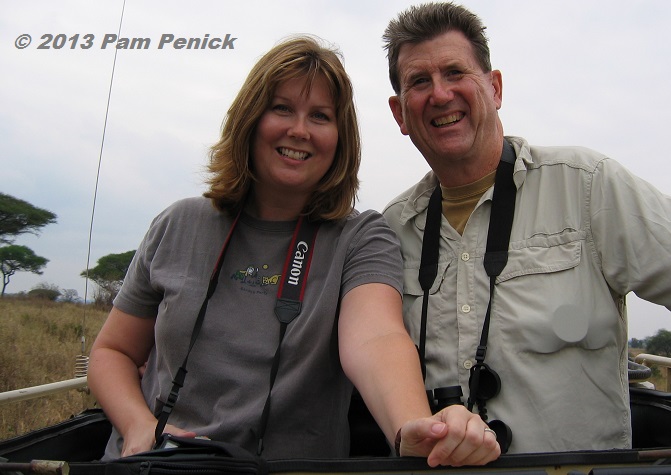
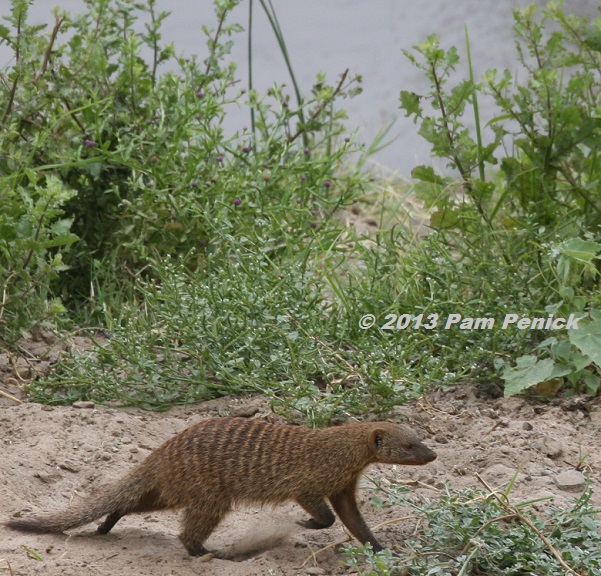
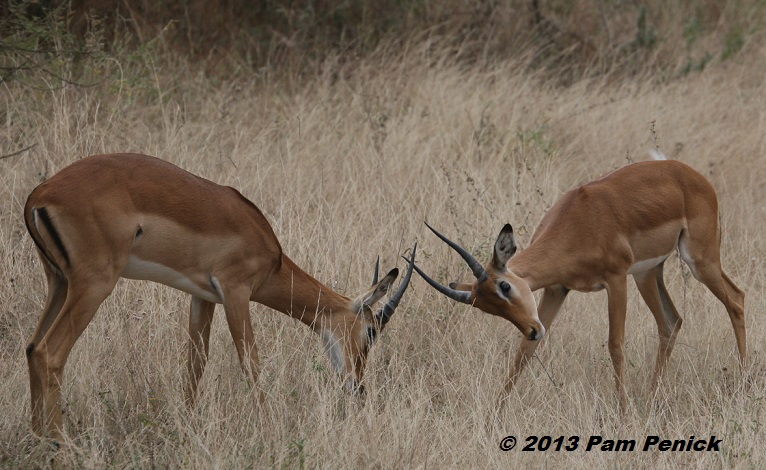
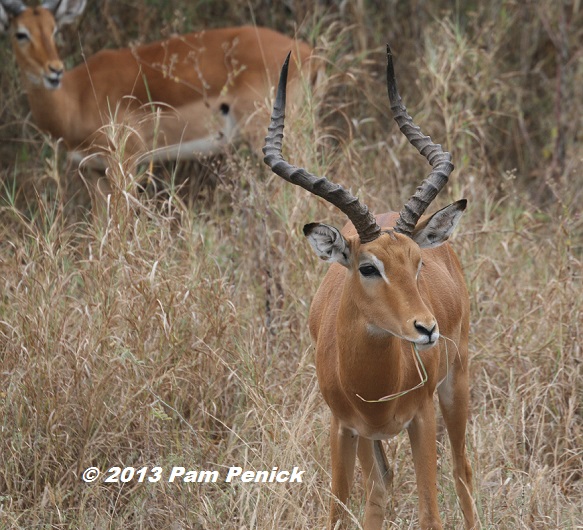
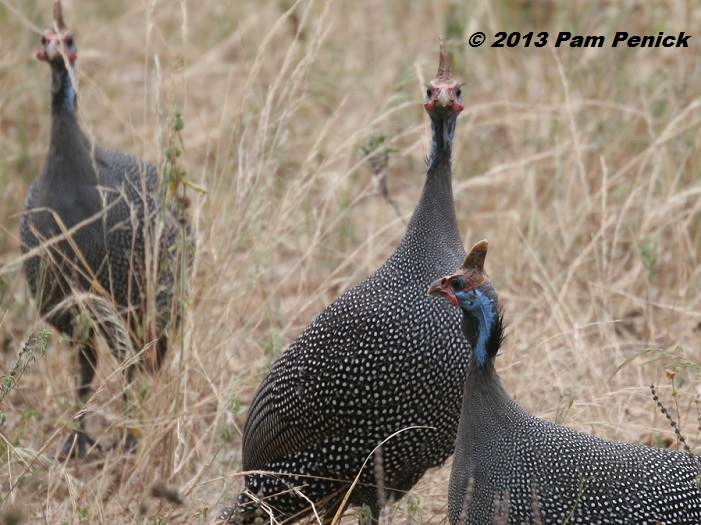
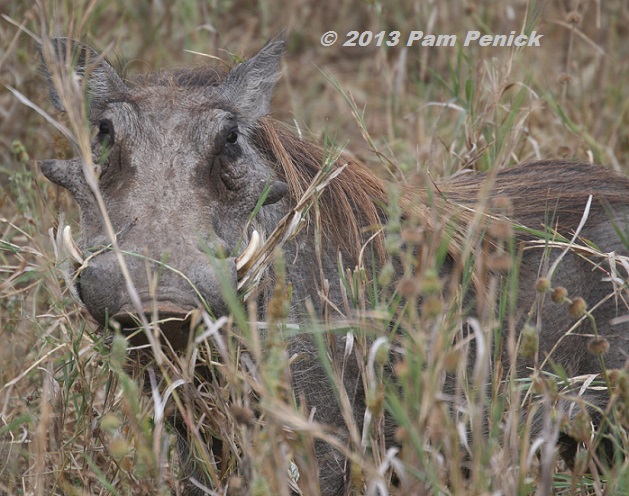
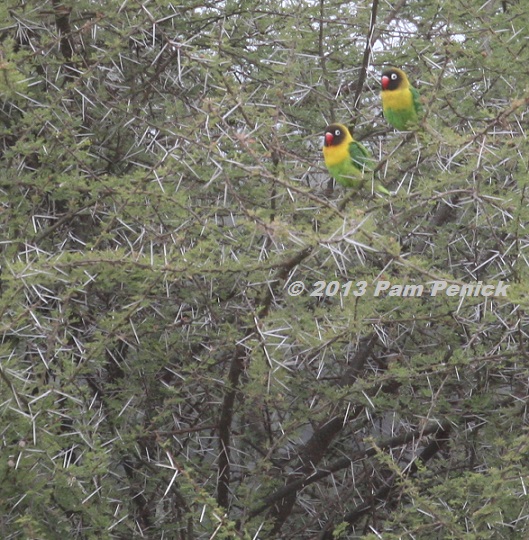
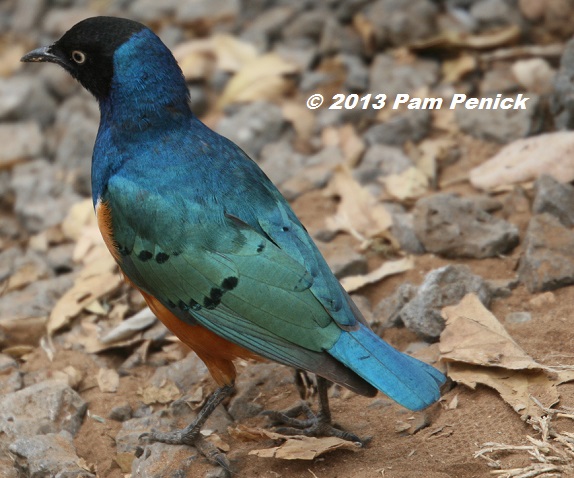
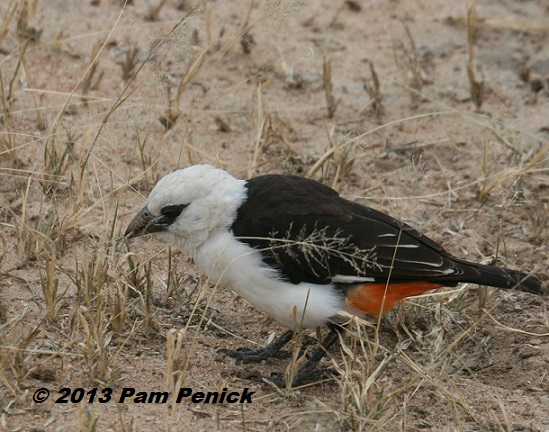
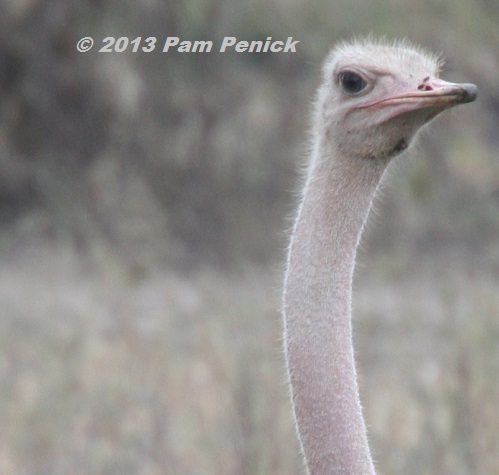
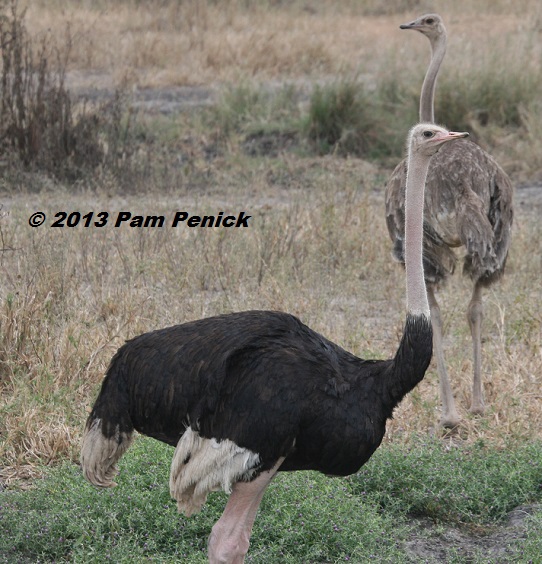
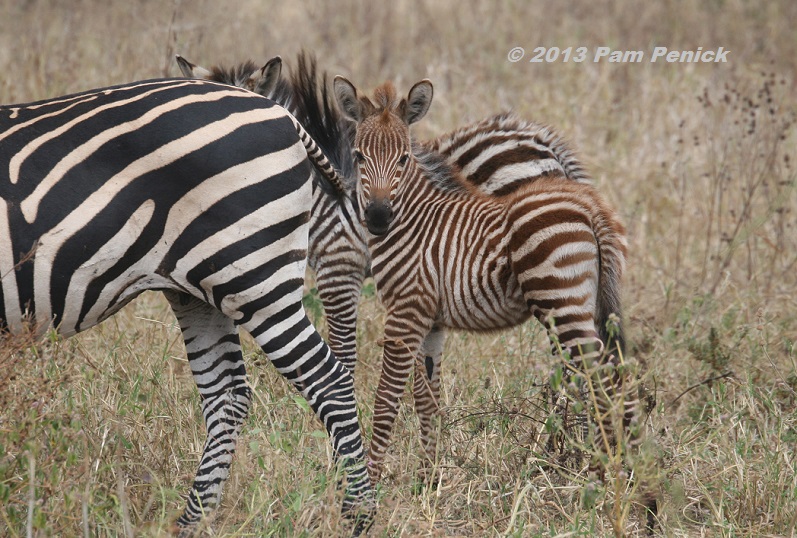
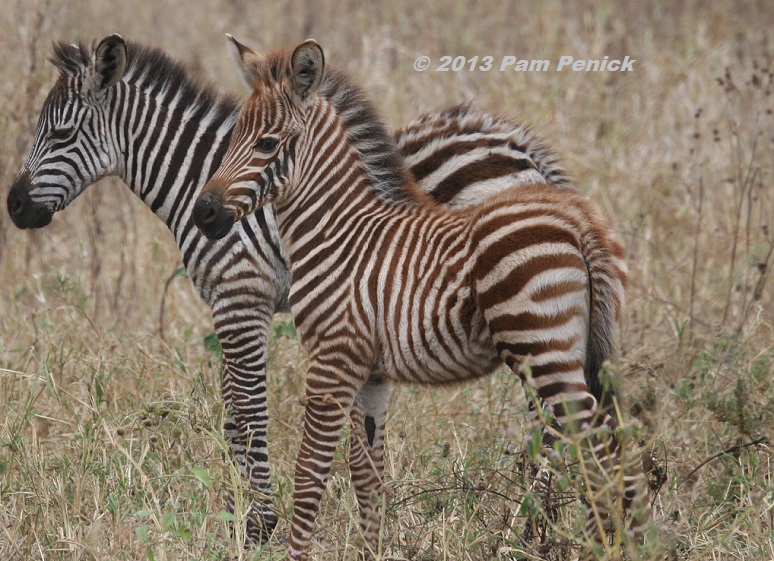
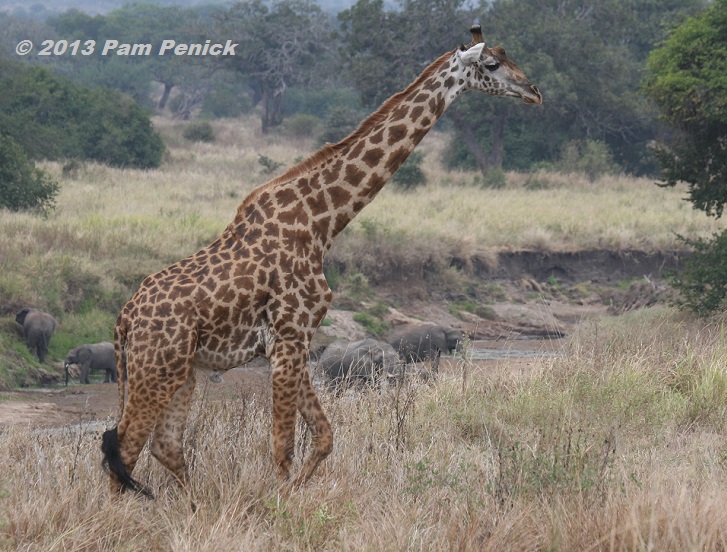
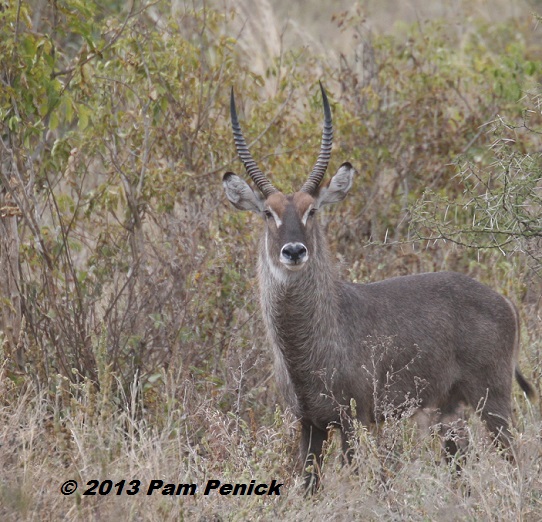
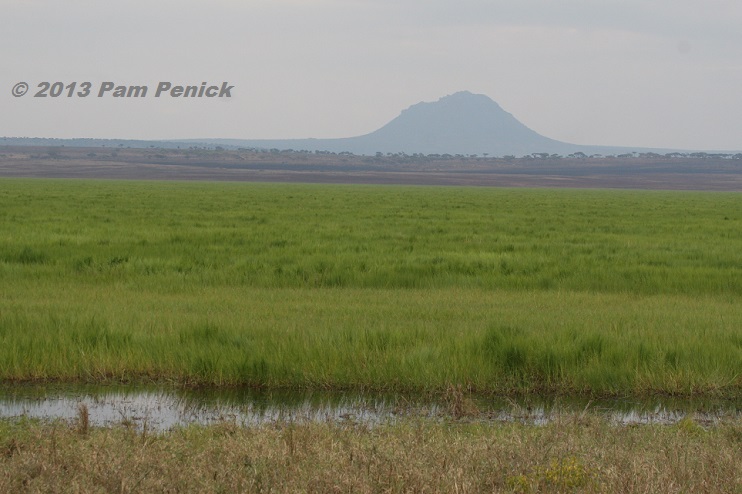
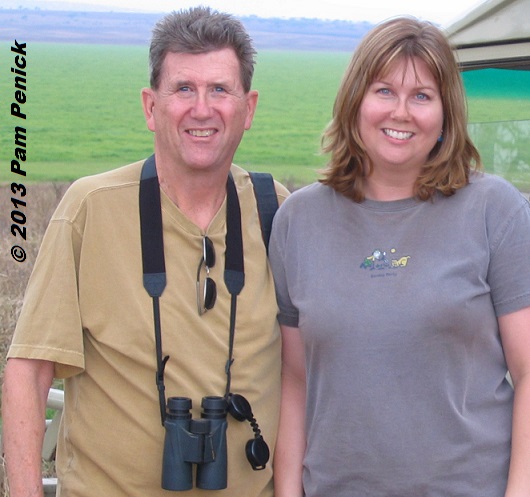
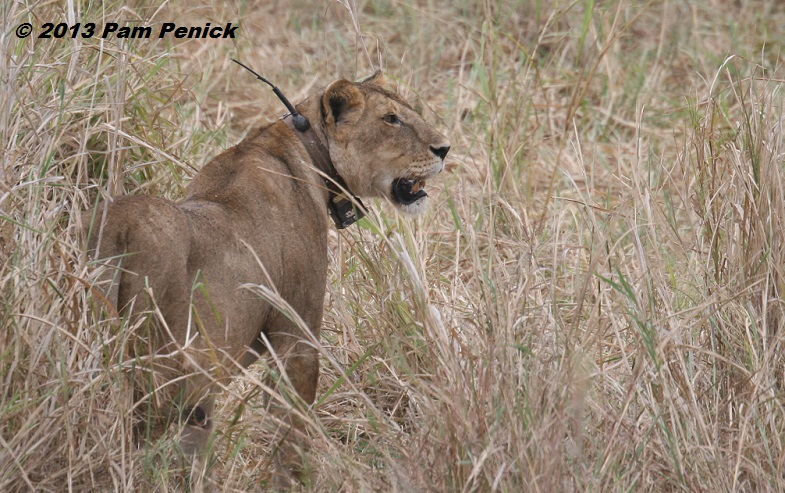
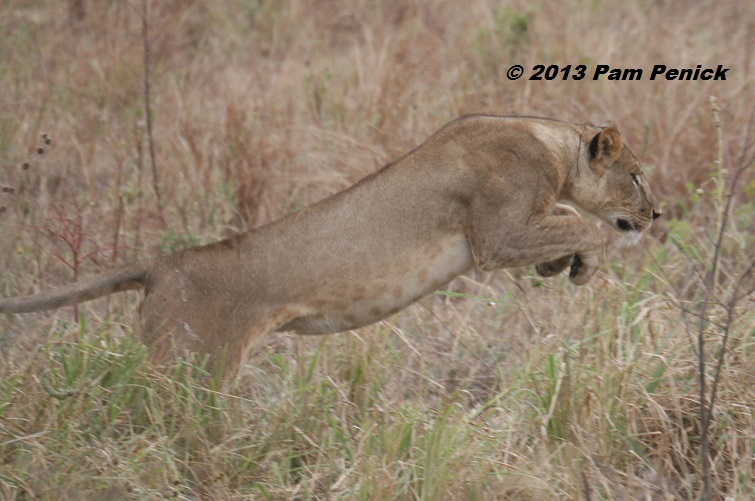
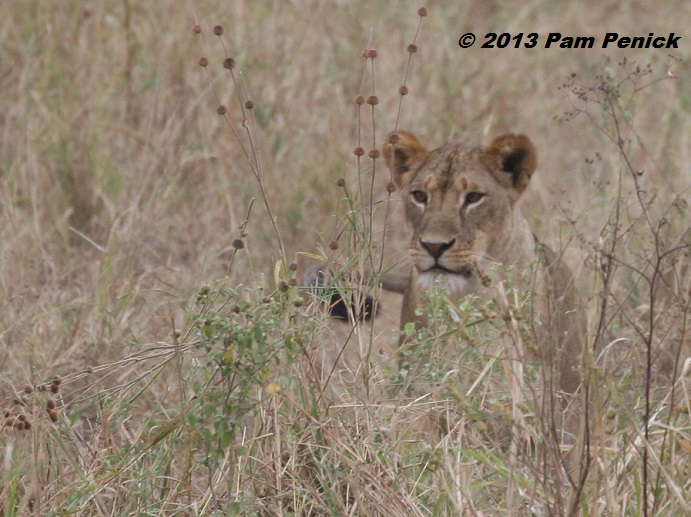
Wow.What a wonderful trip.The best part was bonding time with your Dad. I envy you that.
It was a fabulous trip in every way. —Pam
Love your photos! Funny, one of the first things my husband and I said to each other when we got in the bush in Botswana was how much it reminded us of Texas. A friend here in Ruston who is from West Texas said the same thing about Tanzania. Anyway, one of those giraffes looks like she(?) is pregnant?? And the birds – you got some great shots. I can tell that the elephants were accustomed to you all. They were relatively skittish with us. But aren’t they beautiful? Ack, I could go on and on!
Those dry-country landscapes — there’s something familiar about them to central and west Texans. Yes, I loved the elephants — and took way too many photos of them. My family still groans when they think of how many elephant photos I made them look at. —Pam
I loved seeing your safari and the wonderful animal photos.
I’m glad you’re enjoying the posts, Jeanne. —Pam
This trip must have been so exciting! I loved looking at all your wonderful pictures of the wild animals.
The animals sightings were nonstop, Alison. Tanzania has a wealth of natural beauty to protect. —Pam
How fortunate to see all those wonderful animals, but I think a chance to see a Baobab in all its glory would be awesome.
Yes, and I’d love to see the photos you’d make of them, Les. —Pam
Yay for more travel posts! I am really enjoying this series Pam. What a great collection of animal photos, and to have seen them all with your own eyes! What a treat. Thanks to for the photo of the folks popped up out of the top of your vehicles!
I’m glad to know I’m not boring my gardening peeps. I love that shot of our touring companions popped up in the top of their cars. That’s how we looked every day! —Pam
WHOA. So many great shots! I kind of want a baby zebra or an impala now. 🙂
That baby zebra just slays me — so cute! —Pam
Incredible photos, Pam! Thanks for sharing your trip.
Thanks, Kris. Much more to come. —Pam